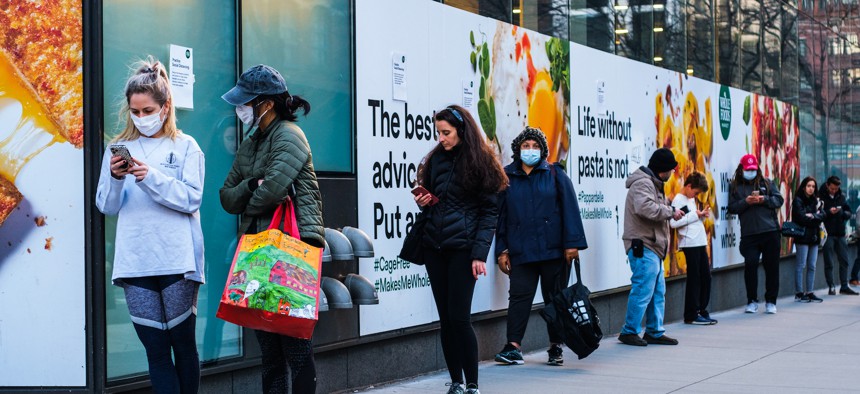New York State
The case for a nuanced battle plan against the next COVID wave
Avoiding a winter lockdown hinges on implementing the right types of restrictions

All 10 regions in New York now have more than 10 new COVID cases per 100,000 people. Jennifer M. Mason/Shutterstock
There are more reasons today than there were just a week ago to be hopeful about the effort to overcome the coronavirus pandemic. A second vaccine candidate appears to be more than 90% effective. President-elect Joe Biden is promising to reinvigorate the federal response to the crisis in the coming months. Doctors have more tools than ever to battle COVID-19. Yet, things are nonetheless looking increasingly dire in the short-term.
All 10 regions in New York now have more than 10 new cases per 100,000 people, which is the metric previously used for determining whether residents of other states would have to quarantine upon entry into the state. Hospitalizations are hitting record levels nationwide. The country is on track to see somewhere around 2,000 deaths per day this winter. And calls for new public health restrictions are growing by the day, even as public health experts try to shift debate away from politically loaded measures like stay-at-home orders.
“We are not in support of a nationwide lockdown,” Dr. Atul Gawande, an adviser to President-elect Joe Biden, told ABC yesterday. “You can have targeted measures building on mask-wearing to include widespread testing, can include dialing up and down capacity restrictions, and those measures need to happen on a more localized basis.”
Public health experts say the choice for states like New York isn’t whether to shut down or not, but to find the right combination of public health measures that can curb the spread of the coronavirus while allowing some commercial and social activities to continue.
Call it a “reset” like New Mexico’s, a “freeze” like Oregon’s, or a “pause” like Michigan’s. Closing activities like indoor dining, bowling, and in-person classes at high schools is becoming increasingly necessary for states across the country, experts say. “This is exactly the kind of action that can best balance saving lives and preserving livelihoods,” Thomas Frieden, a former New York City health commissioner, said Sunday in response to the new restrictions in Michigan.
“An effective closure needs to be nuanced, specific, and tightened and loosened based on real-time data about where the virus is spreading,” Frieden, who also served as director of the Centers for Disease Control and Prevention, added in The Atlantic. “Lockdown and stay-at-home are not just inaccurate terms; they are unnecessary measures.”
Gov. Andrew Cuomo is holding back from following the lead of other states. “Every other state should be more aggressive than we are because their numbers are worse,” the governor told reporters over the weekend. “I want to keep our numbers as low as we can keep them while allowing the economy to function.” Any delay in restrictions, however, brings increased risk that the coronavirus will continue to spread at levels similar to what happened at the beginning of the crisis.
New York has taken some additional actions to stem the surge in cases. This includes new limits on in-person gatherings and ordering bars and restaurants to close dining service earlier. Yet, the governor is still largely sticking to the “microcluster” strategy that seeks to avert the need for restrictions at the regional and statewide levels.
Additional restrictions, however, could come if the testing positivity rate – the number of positive COVID tests reported to the state each day – increases, according to Cuomo. “If the numbers continue to go up, we’re going to clamp down even more,” he told MSNBC today. That likely means more closures of non-essential businesses and halting public gatherings at schools in local cluster areas where the coronavirus surges in the coming weeks.
Even wider community spread could mean similar restrictions at the regional and state level. “I’m just praying that doesn’t happen,” Cuomo told reporters last week. Cuomo has taken a lot of heat for waiting too long at the beginning of the pandemic to impose a stay-at-home order, but his current approach appears to be well in line with what public health experts are urging. The next big question that will need to be answered is what activities should be restricted moving forward, especially if the pandemic begins to reach levels in the state similar to this past spring.

NEXT STORY: Should NYC’s schools close before indoor dining?